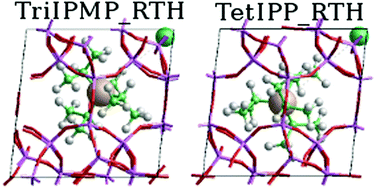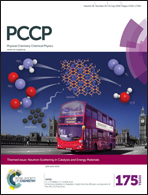An INS study of entrapped organic cations within the micropores of zeolite RTH†
Abstract
Two different organic cations (structure directing agents, SDAs) have been selected because of their ability to drive the synthesis of zeolites towards the same microporous material, RUB-13 (RTH), both being organophosphorous compounds. These P containing structure directing agents are characterized by a high concentration of positive charge on the phosphorus atom. Then, in the presence of fluoride anions used in these syntheses, a strong P+⋯F− electrostatic contribution competes with the van der Waals short range SDA⋯zeolite interaction that drives the zeolite formation. The rotation of the methyl groups present in the SDA is expected to be nearly free if van der Waals interactions dominate, but they will be hindered if the Coulombic P+⋯F− term forces a closer approach to the SDA towards the zeolite framework. SDAs can be designed a priori to tune which interactions dominate. The rotational mobility of the SDAs, as well as certain related bending modes, has been well tackled by inelastic neutron scattering (INS) in order to test this hypothesis. The INS results provide valuable information for the design of specific SDAs for the synthesis of zeolites.

- This article is part of the themed collection: Neutron Scattering in Catalysis and Energy Materials


 Please wait while we load your content...
Please wait while we load your content...